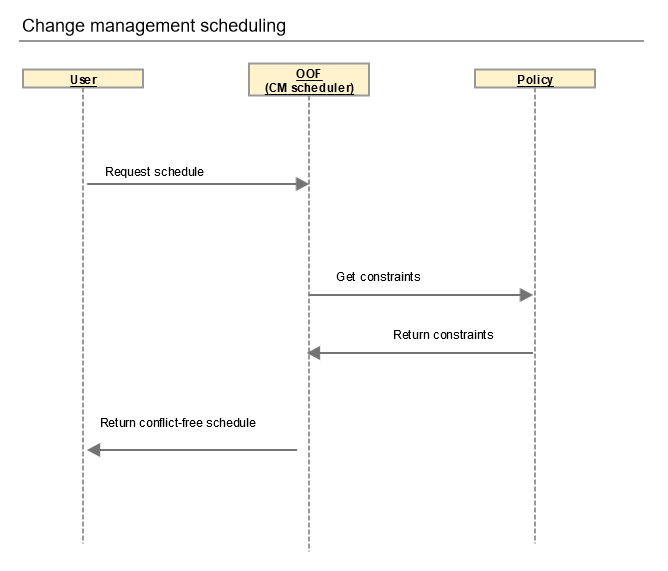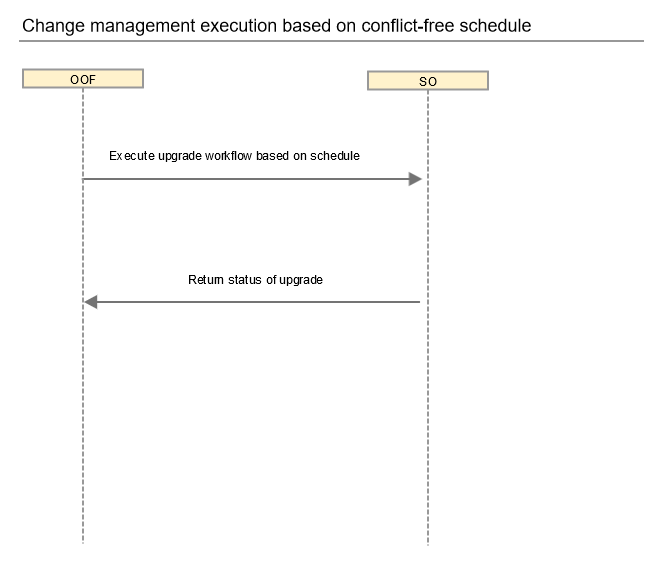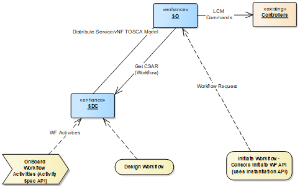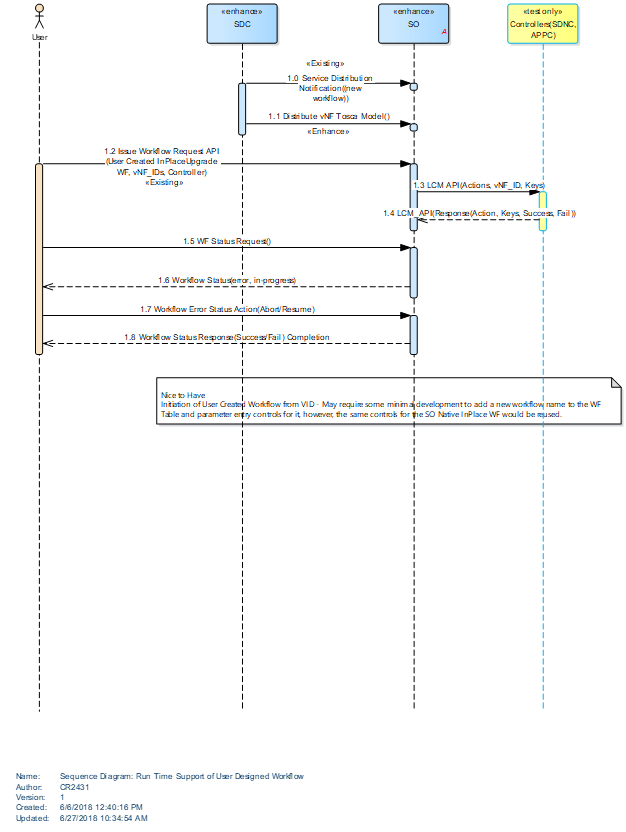For Casablance release, we propose the following functionalities.
1) Flexible workflow designer and orchestrator COMMITTED
- Impacted components: SDC, SO, and VID (nice-to-have)
- Contributors: AT&T, Amdocs, Huawei (?)
- Functionalities
- Catalog in SDC for meta-data about the building blocks – completed by Amdocs
- Designer/editor in SDC for creating workflow – committed to develop by Amdocs
- Convert already existing building blocks/activities to be workflow designer ready
- Move workflow out of service model to independent artifact – priority nice to have
- Distribution of workflow to SO – preferably with workflow as independent artifact
- Deployment of workflow in SO
- User interface (VID) to select workflow and input parameters for execution
- Execute workflow in SO
- Rainy day handling for unsuccessful workflow steps
- Visualize the execution results on VID dashboard
- Ability to cancel workflow execution (VID)
Flow Designer Orchestration High Level Diagram
Run-time support of User Designed Workflows
2) Traffic migration building block COMMITTED
- Impacted components: SDNC, APPC, VFC, SO
- Contributors: AT&T, Orange, Intel
- Functionalities
- Common API definition for traffic migration
- Source, destination nodes - pool
- Flow distribution policy - equal distribution for e.g.
- Anchor points - e.g., DNS for layer-4+ VNFs
- Fine-grained flow filter
- Failure handler
- Mechanisms for traffic migration - implemented by controller
- Assessment report on commonalities/differences across VNF types – e.g., IP based redirection, DNS based or load balancer
- Common API definition for traffic migration
- Integration/testing
- Use case across different VNF types – vGW/vCPE, vFW, vLB, vDNS
- Develop recipe (using Ansible, NETCONF or REST) for traffic migration depending on the protocol used to communicate with the VNF
3) 5G RAN PNF Software upgrade
- Impacted components: APPC, SO, SDC, A&AI, Ansible/EM
- Contributors: AT&T, China Mobile, Huawei
- Functionalities
- Leverage in-place software upgrade Beijing use case to demonstrate application to 5G RAN PNFs
- Health check (pre/post)
- Software download, installation and activation
- Roll-back for unsuccessful execution
- Manual processing / intervention for failures/roll-back issues
4) Change Management Scheduler COMMITTED
- Impacted components: OOF
- Contributors: AT&T
- Functionalities
- Discover schedule based on the change management constraints
- Constraints
- Time-based - e.g., execute the change activity during the maintenance window and weekdays
- Concurrency of how many NF instances to change at a time - this is concurrency within a single user request
- NF conflicts (if time permits) - avoid work scheduled at the same time on the same NF instance
- Input
- List of NF instances - request details as depicted in the Beijing script
- Start/end times
- Expected duration
- Constraint/policy
- Type of change (workflow name)
- Concurrency value
- Output
- Schedule - time and instance at which the workflow would be executed
Integration/Testing plan
Use Beijing vGW in-place software upgrade to demo execution based on the schedule output by OOF



